Introduction
Whether it’s a life-threatening situation or minor accident, you’ll be better prepared to react confidently and without wasting time if you study this basic emergency first aid guide before an emergency occurs.
Other important considerations:
- Keep emergency telephone numbers on-hand so that they are available for immediate use.
- Keep medical supplies in a safe and convenient place where you can find them when needed.
- Seek professional help for medical emergencies if you have access.
- Always remain calm and use common sense in any emergency situation.
First Aid Topics in This Guide
Assessing the Situation
Minor First Aid Situations
- Burns & Scalds
- Cuts & Scrapes
- Splinters
- Stings
Weather-related Situations
- Cold Exposure
- Frostbite
- Heat Exhaustion
- Sunburn
- Sunstroke
Emergency / Trauma Situations
-
Bleeding
-
Breathing Problems
-
Broken Bones
-
Chemical Burns
-
Choking, Airway Obstruction
-
Penetrating Objects
-
Poisoning
-
Severed Body Parts (Avulsion)
-
Shock
-
Sprains
-
Transporting an Injured Person
-
Unconciousness
-
Wounds (Severe)
Assessing the Situation
WHAT TO TREAT FIRST
- Don’t panic. You will be able to assess the situation more effectively. Remember, psychological support is also important.
- Remember the ABCs of Life Support:
– Airways open – Open and maintain victim’s airway.
– Breathing restored – If victim is not breathing, begin rescue breathing techniques immediately.
– Circulation maintained – If no pulse is present, get assistance from a person certified cardiopulmonary resuscitation (CPR) techniques.
– REMEMBER, to be able to perform CPR effectively, it is essential to be properly trained.
- Check for bleeding. Apply direct pressure and elevate injured limb.
- Look for signs of shock and broken bones (fractures).
- Check for emergency medical identification on the victim.
- Get professional medical help quickly. Know emergency numbers, such as 0 or 911. Telephone appropriate authorities (rescue squad, ambulance, police, poison control center or fire department) and describe the problem. Be sure to give your name, location and the number of persons involved.
- Loosen any clothing that may restrict victim’s breathing or interfere with circulation.
- Never give an unconscious person anything by mouth.
- DO NOT move injured persons unless situation is life-threatening. Keep victim still, quiet and warm (except heat exhaustion and sunstroke). Victims with broken bones (fractures) should not be moved until a splint has been properly applied.
Minor First Aid Situations
BURNS & SCALDS
Caution:
DO NOT clean burns or break blisters. DO NOT remove any clothing that sticks to burn. DO NOT apply grease, ointment or medication to a severe burn. DO NOT use cotton or material with loose fibers to cover burns.
Treatment:
First degree burns – redness or discoloration of skin surface; mild swelling and pain.
- First degree burns – redness or discoloration of skin surface; mild swelling and pain.
- Apply cool, wet cloths or immerse in water. DO NOT use ice.
- Blot gently; apply a dry, sterile pad if necessary.
Second degree burns – deep burn with red or mottled appearance; blisters; considerable pain and swelling; skin surface appears wet. See treatment for first degree burns. If arms and legs are affected, elevate above heart level. Burns may be deep and potentially serious, requiring medical treatment depending on extent and location. Be alert for signs of shock and infection.
Third degree burns – deep tissue destruction with a white or charred appearance; no pain. Call for professional medical help immediately. Be alert for signs of shock.
CUTS & SCRAPES
Before initiating any first aid to control bleeding, be sure to wear health care gloves to avoid contact of the victim’s blood with your skin.
- CLEAN… wound and surrounding area gently with mild soap and rinse. Blot dry with sterile pad or clean dressing.
- TREAT… to protect against contamination.
- PROTECT… and cover to absorb fluids and prevent further contamination. (Handle only the edges of sterile pads or dressings.) Secure with first aid tape to help keep out dirt and germs.
SPLINTERS
Slender pieces of wood, bone, glass or metal objects that lodge in or under skin
Symptoms:
May Include pain, redness, swelling.
Treatment:
- First wash your hands thoroughly, then gently wash affected area with mild soap and water.
- Sterilize needle or tweezers by boiling for 10 minutes; wipe with a sterile pad before use.
- Loosen skin around splinter with needle; use tweezers to remove splinter. If splinter breaks or is deeply lodged, consult professional medical help.
- Cover with adhesive bandage or sterile pad, if necessary.
STINGS
Caution:
In highly sensitive persons, do not wait for symptoms to appear. Get professional medical help immediately. If breathing difficulties occur, start rescue breathing techniques; if pulse is absent, begin CPR.
Signs:
Signs of allergic reaction may include: Nausea; severe swelling; breathing difficulties; bluish face, lips and fingernails; shock or unconsciousness.
Treatment:
- For mild or moderate symptoms, wash with soap and cold water. Remove stinger or venom sac with tweezers or by gently scraping with fingernail (DO NOT squeeze).
- For multiple stings, soak affected area in cool bath. Add one tablespoon of baking soda per quart of water.
BROKEN BONE (FRACTURE)
Break or crack in bone.
Symptoms:
May include The victim hearing or feeling the bone break; area tender to touch with pain in one spot; swelling noted around suspected fracture; limb in an unnatural position; painful movement; abnormal motion; loss of function; grating sensation; discoloration of affected area.
Treatment:
- Keep victim warm and still, treat for shock if necessary. DO NOT move victim until a splint has been applied unless there is danger of a life-threatening emergency.
- If bone is suspected to be broken but does not pierce the skin (closed fracture), splint the limb before the victim is moved, immobilizing the joint above and below the suspected fracture site.
- If broken bone pierces the skin (open or compound fracture), apply pressure to appropriate pressure point to control bleeding. DO NOT try to straighten limb, return it to a natural position, or replace bone fragments. DO NOT touch or clean the wound. Secure a sterile pad or clean cloth firmly in place over the wound and tie with strong bandages or cloth strips.
- If victim must be moved, apply a splint to prevent further damage. Use anything that will keep the broken bones from moving, including broomsticks, boards or rolled magazines. Pad splints with cotton, clothes or clean cloths tied firmly (but not tightly) in place. If victim complains of numbness, loosen splint.
- Get professional medical help immediately.
CHEMICAL BURNS
Treatment:
- Remove contaminated clothing.
- Flush burned area with cool water for at least 5 minutes.
- Treat as you would any major or minor burn.
- If eye has been burned:
– Immediately flood face, inside of eyelid and eye with cool running water for at least 15 minutes. Turn head so water does not drain into uninjured eye. Lift eyelid away from eye so the inside of lid can also be washed.
– If eye has been burned by a dry chemical, lift any loose particles off the eye with the corner of a sterile pad or clean cloth.
– Cover both eyes with dry sterile pads, clean cloths, or eye pads; bandage in place.
CHOKING, AIRWAY OBSTRUCTION
PARTIAL OBSTRUCTION WITH GOOD AIR EXCHANGE
Symptoms:
May include forceful cough with wheezing sounds between coughs.
Treatment:
Encourage victim to cough as long as good air exchange continues. DO NOT interfere with attempts to expel object.
PARTIAL OR COMPLETE AIRWAY OBSTRUCTION IN CONSCIOUS VICTIM WITH POOR AIR EXCHANGE
Symptoms:
May include: Weak cough; high-pitched crowing noises during inhalation; inability to breathe, cough or speak; gesture of clutching neck between thumb and index finger; exaggerated breathing efforts; dusky or bluish skin color.
Treatment:
For adult victim, if victim is standing or sitting:
- Stand slightly behind victim.
- Place your arms around victim’s waist; place your fist, thumb side in, against victim’s abdomen, slightly above the navel and below the rib margins.
- Grasp fist with your other hand and exert a quick upward thrust. Repeat (five times in a rapid succession) if necessary, Heimlich Maneuver or manual thrust.
COMPLETE AIRWAY OBSTRUCTION IN UNCONSIOUS VICTIM
Activate EMS system first. Follow breathing problems section.
PENETRATING OBJECTS
Such as sticks or pieces of metal protruding from body.
Symptoms:
May include profuse bleeding; swelling and redness of injured tissue.
Caution:
DO NOT remove penetrating object.
Treatment:
- Get professional medical help immediately.
- If victim is fixed to object (impaled), cut it off at a safe distance from skin. Immobilize object with thick dressings made from sterile pads or clean cloths secured in place with first aid tape, a belt or a bandage. – or –
- If object is protruding from victim, DO NOT move it. Immobilize object with thick dressings made from sterile pads or clean cloths secured in place with first aid tape, a belt or a bandage.
- Do not apply bandage so tightly that breathing is restricted.
- If object penetrates chest and victim complains of discomfort or pressure, quickly loosen bandage on one side and reseal. Watch carefully for recurrence. Repeat procedure if necessary.
- If breathing problems develop, begin rescue breathing techniques immediately.
- Treat for shock.
POISONING
Call 911, your local first aid squad, or poison control center immediately before administering first aid.
Treatment:
- DO NOT give any other first aid if victim is unconscious or is having convulsions. Begin rescue breathing techniques or CPR if necessary. If victim is convulsing, protect from further injury; loosen tight clothing if possible.
- If professional medical help cannot be reached immediately:
– DO NOT induce vomiting if poison is unknown, a corrosive substance (i.e., acid, cleaning fluid, lye, drain cleaner), or a petroleum product (i.e., gasoline, turpentine, paint thinner, lighter fluid). DO NOT use activated charcoal.
– Induce vomiting if poison is known and is not a corrosive substance or petroleum product. To induce vomiting: Give adult one ounce of syrup of ipecac (1/2 ounce for child) followed by four or five glasses of water. If victim has vomited, follow with one ounce of powdered, activated charcoal in water, if available.
- Take poison container (or vomitus if poison is unknown) with victim to the hospital.
SEVERED BODY PARTS (AVULSION)
Tissue is partially or completely cut or torn from body.
Caution:
Wrap the detached part of the body in something clean, and send it to the hospital with the victim so that it may be reattached if possible. Ice may be used to keep the detached part cool; however, prevent it from direct contact with ice and/or from freezing.
Treatment:
- Stop the bleeding immediately.
- Treat for shock if necessary. If breathing problems are present, begin rescue breathing techniques. If wound is not deep or is not bleeding severely, gently cleanse with mild soap and warm water.
- Cover with a sterile dressing or clean cloth and bandage.
- Get professional medical help immediately.
SHOCK
Disturbance in the circulation of the blood that can upset all body functions.
Caution:
Shock is a dangerous condition and can be fatal. Expect some degree of shock in any emergency. DO NOT give anything by mouth.
Symptoms:
May include unusual weakness or faintness; cold, pale, clammy skin; rapid, weak pulse; shallow, irregular breathing; chills; nausea; unconsciousness.
Treatment:
- Treat known cause of shock as quickly as possible (i.e., breathing difficulties, bleeding, severe pain).
- Maintain an open airway. If victim vomits, gently turn head to side.
- Keep victim warm and lying flat. (In cases of head or chest injuries, with no chance of broken neck or back, elevate head and shoulders 10 inches higher than feet if possible.)
- Get professional medical help immediately.
- DO NOT give anything by mouth.
SPRAINS
Injury to soft tissue surrounding join due to wrenching or laceration of ligaments, muscles, tendons, or blood vessels
Symptoms:
May include painful movement, swelling, discoloration and tenderness around injured joint.
Caution:
Victim may have a broken bone (fracture) and should be examined by a medical professional.
Treatment:
- If ankle or knee is affected, do not allow victim to walk. Loosen or remove shoe; elevate leg.
- Protect skin with thin towel or cloth. Then apply cold, wet compresses or cold packs to affected area. Never pack joint in ice or immerse in icy water.
- Consult professional medical assistance for further treatment if necessary.
TRANSPORTING AN INJURED PERSON
If injury involves neck or back, DO NOT move victim unless absolutely necessary. Call for professional medical help.
If victim must be pulled to safety, move body lengthwise, not sideways. If possible, slide a coat or blanket under the victim:
- Carefully turn victim toward you and slip a half-rolled blanket under back.
- Turn victim on side over blanket, unroll, and return victim onto back.
- Drag victim head first, keeping back as straight as possible.
If victim must be lifted, support each part of the body. Position a person at victim’s head to provide additional stability. Use a board, shutter, table top or other firm surface to keep body as level as possible.
UNCONSCIOUS
Victim is not mentally aware; does not respond to sensory stimuli such as sound or light.
Treatment:
- Call for professional medical help.
- DO NOT move victim or give anything by mouth.
- Keep victim warm; loosen any tight clothing.
- Maintain an open airway. If breathing difficulties develop, begin rescue breathing techniques immediately.
- Check for emergency medical identification tag to help determine cause of unconsciousness.
WOUNDS (SEVERE)
Breaks in skin or mucus membrane (open) or injuries to underlying tissue breaks skin (closed).
Caution:
Some wounds, such as small cuts or minor scrapes, require only simple first aid measures; others,however, require immediate first aid followed by professional medical treatment. Before treating any serious incision, abrasion or laceration with extensive bleeding, act quickly to control bleeding. Get professional medical help immediately. Any wound can become contaminated and infected.
Weather Related Situations
COLD EXPOSURE
Treatment:
- Move victim into warm room as soon as possible.
- Be alert for breathing difficulties; start rescue breathing techniques if necessary.
- Remove wet or frozen clothing. Immediately rewarm victim by wrapping in blankets or placing in tub of warm, not hot, water. Dry victim thoroughly after bath.
- Give victim hot liquids to drink, only if conscious (not alcohol).
- Follow treatment for frostbite.
- Consult professional medical help if indicated.
FROSTBITE
Caution:
DO NOT break blisters, rub affected area, or apply heat lamps or hot water bottles. DO NOT attempt rapid thawing if refreezing is a possibility.
Treatment:
- Warm affected areas as quickly as possible by covering with clothing and blankets or immersing frozen part in warm, not hot, water. If frostbitten area has been thawed and refrozen, then warm at room temperature.
- Discontinue warming techniques as soon as affected area becomes flushed. Expect swelling and pain after thawing. Victim may require an analgesic.
- Gently exercise affected area after it has been rewarmed.
- DO NOT apply dressings or clothing unless transportation is required for medical help. If fingers or toes are affected, separate with sterile pads or clean cloths.
- Elevate frostbitten areas, but not higher than heart.
- Get professional medical help.
HEAT EXHAUSTION
Symptoms:
May include fatigue; irritability; headache; faintness; weak, rapid pulse; shallow breathing; cold, clammy skin; profuse perspiration.
Treatment:
- Instruct victim to lie down in a cool, shaded area or an air-conditioned room. Elevate feet.
- Massage legs toward heart.
- Only if victim is conscious, give cool water or electrolyte solution every 15 minutes until victim recovers.
- Use caution when letting victim first sit up, even after feeling recovered.
SUN BURN
Treatment:
-
Treat for first or second degree burns.
-
Treat for shock if necessary.
-
Cool victim as rapidly as possible by applying cool, damp cloths or immersing in cool, not cold, water.
SUN BURN
Treatment:
-
Treat for first or second degree burns.
-
Treat for shock if necessary.
-
Cool victim as rapidly as possible by applying cool, damp cloths or immersing in cool, not cold, water.
-
Give victim fluids to drink.
-
Get professional medical help immediately for severe cases.
SUNSTROKE
Symptoms:
May include extremely high body temperature (106°F or higher); hot, red, dry skin; absence of sweating; rapid pulse; convulsions; unconsciousness.
Caution:
Sunstroke is a life-threatening emergency.
Treatment:
- Get professional medical help immediately.
- Lower body temperature quickly by placing victim in partially filled tub of cool, not cold, water (avoid over-cooling). Briskly sponge victim’s body until temperature is reduced; then towel dry. If tub is not available, wrap victim in cold, wet sheets in well-ventilated room or use fans and air conditioners until body temperature is reduced.
- DO NOT give stimulating beverages, such as coffee, tea, or soda.
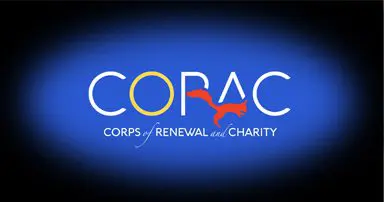



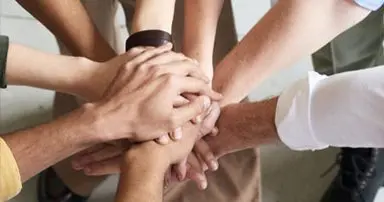

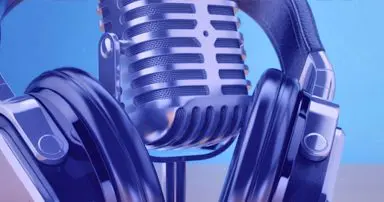

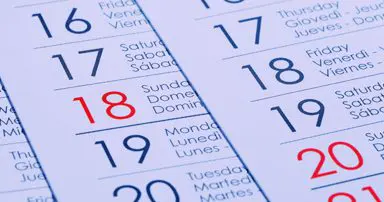










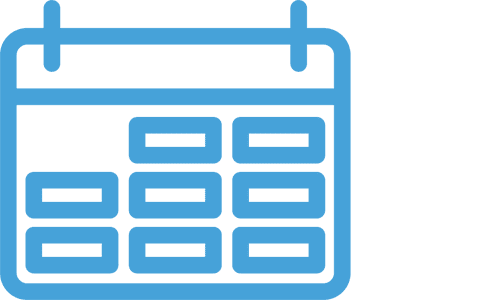






0 Comments